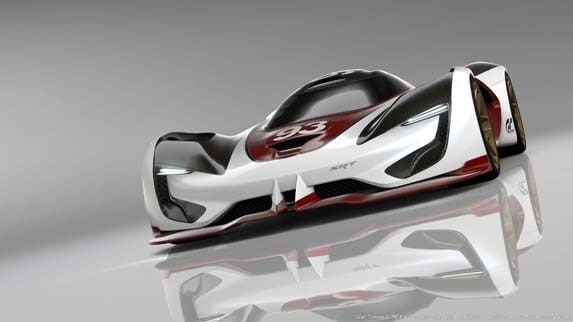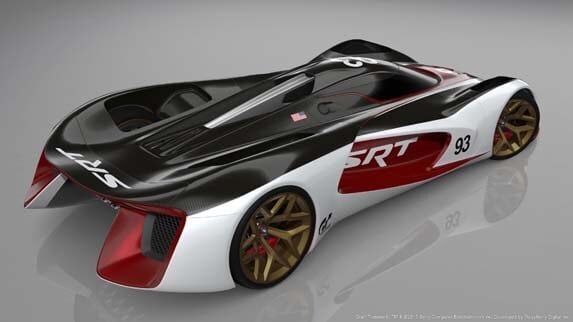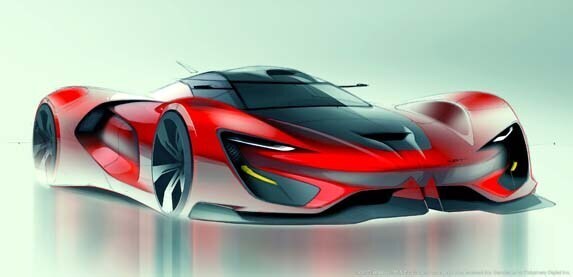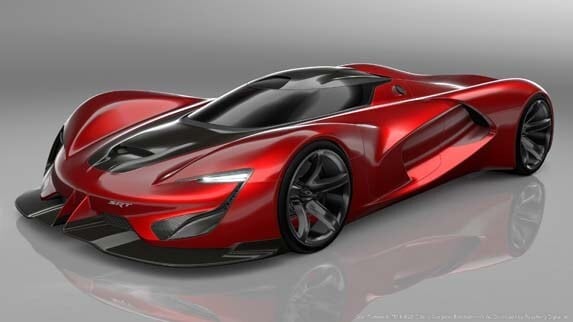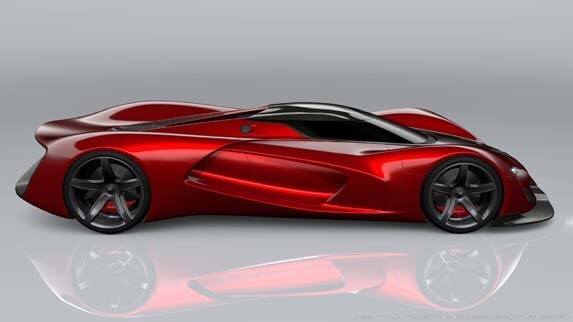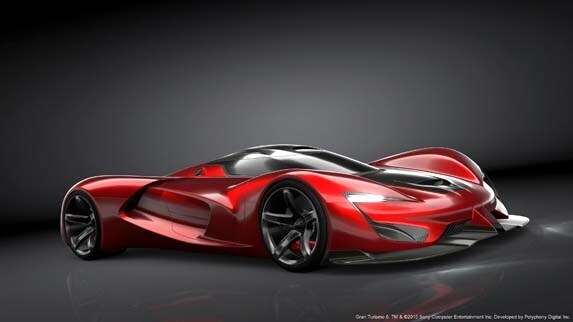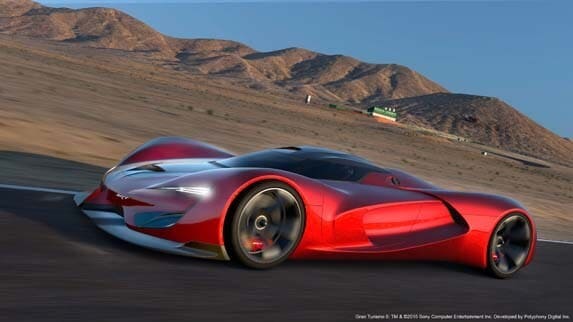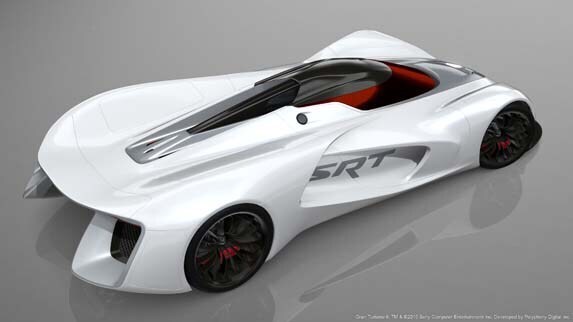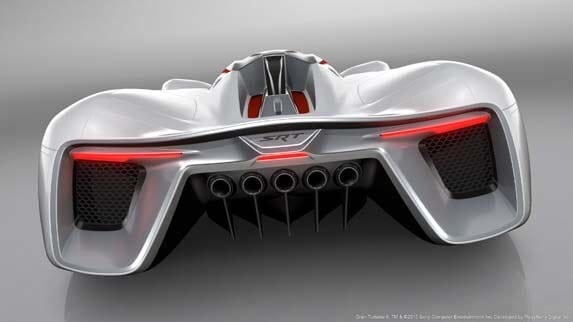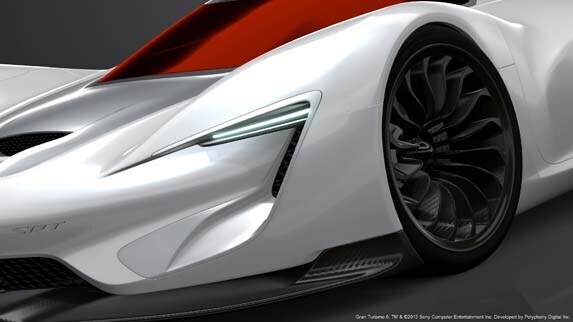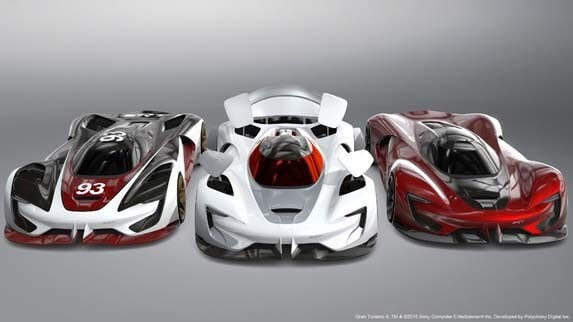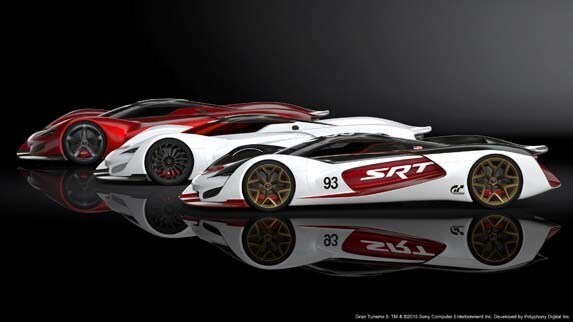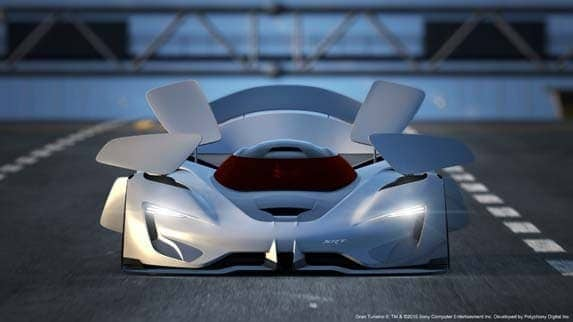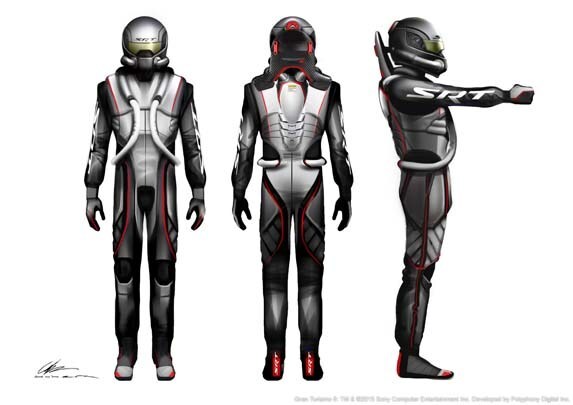Kazunori Yamauchi isn’t an automotive executive, but the industry has helped to make him a very wealthy man, and when he rings up a top corporate officer-Fiat Chrysler Automobiles design chief Ralph Gilles, for example-you can bet his call will get through.
Yamauchi is the president Polyphony Digital, a subsidiary of Sony Computer Entertainment, and the creator of Gran Turismo, the Play Station video game. The cars are developed with the manufacturers at the invitation of Yamauchi’s company, all of them more than delighted to participate. This project was sent to FCA’s Street and Racing Technology (SRT) group, which responded with the hottest car to appear in Grand Turismo’s inventory: the SRT Tomahawk Vision, playfully labeled as a 2035 model.
And not just one car. When Gran Turismo addicts download the Tomahawk for virtual driving thrills they’ll find three versions-Street (the mildest edition), Race, and X, for experimental. It could also mean over the top or outrageous, but neither of those words begins with an X.
Designers all in
The FCA design department went all in for the program. Beginning in August of 2014, all members, including interns, were invited to submit concept sketches. Gilles and top staff winnowed the submissions down to five finalists, and from that five Paul Hoste’s design was declared the winner.
There’s some irony in this, since Hoste works in the Jeep design studio. But like so many of the design staffers, he’s a Gran Turismo player and his dream cars bear little resemblance to Jeeps. "I basically started with the Viper," confessed Hoste.
While Hoste had to concern himself primarily with creating a sexy surface, the engineering side of the Tomahawk’s development went much deeper, creating a virtual chassis utilizing structural elements that have yet to be employed in contemporary automobiles (graphene lattice, for example), as well as a virtual engine, and a system of computer-controlled aerodynamic flaps that raise and lower automatically-and independently of one another-to give the car balance and grip in high speed corners.
Also: The Class of 2016 — New Cars Ready to Roll
Scale model sent to wind tunnel
The engineering team went so far as to create a scale model of the car for wind tunnel development, to maximize aerodynamic downforce while minimizing drag. According to the engineering team, max downforce is about six times the car’s curb weight, which varies from 2026 pounds for the street version to 1658 in the X model. Downforce can amount to as much as 10,000 pounds at 400 mph, according to the engineers, and the movable flaps add dramatically to braking.
Riding on air shocks, the Tomahawk translates aero downforce to grip at ground level via a set of serious tires-325/25-21 front, 425/20-23 rear-composed of what the engineering team describes as "next generation compounds and construction."
The basic shape is obviously slippery, with a coefficient of drag value of about 0.25. But propelling a car to 400 mph requires massive power, and to achieve that the engineers dreamed up a unique hybrid system which combines a pneumatic drive system for the front wheels and a naturally aspirated V-10 powering at the rear.
Theoretical 10 g cornering
Wrapped in carbon filament, the high-pressure air tanks are integrated longitudinally into the carbon fiber chassis, and operate the movable aero panels as well as front-drive propulsion. And since the Tomahawk is capable of generating up to 10 g in hard cornering, the team felt compelled to create a g-suit to keep the driver from high-g blackouts. The suit will not be sold separately. In fact, it won’t be sold at all.
Rear wheel power is delivered by a 7.0-liter (6981 cc) V-10. At a glance, the cylinder count suggests Viper, but the Tomahawk unit is a 144-degree design. Seeking the lowest possible center of gravity, the engineers started with a 180-degree configuration, but computer simulations found better balance with the shallow angle.
Equipped with pneumatic valve operation, the all-but-flat 10 is capable of revving to 14,500 rpm in the X version. Output for the three levels is rated at 2168 horsepower and 895 pound-feet of torque in the Tomahawk X; 1137 hp, 719 lb-ft, 9500 rpm redline in the Race version; and 792 hp, 679 lb-ft, 9500 rpm redline in the Street model.
Also: Kelley Blue Book best Buy Awards of 2015
Attainable power
The engineering team claims that all these power numbers could be attainable in a real engine built to these design specs. Total system output for the three levels: Tomahawk X, 2590 hp; Race, 1450 hp; Street, 1007. Virtual speed capabilities of the Tomahawk X are so high that Yamauchi admits his team had to make some software changes to the Gran Turismo program to accommodate it.
Could this be due to the depth of Grand Turismo expertise at FCA?
"The people at SRT are very good Gran Turismo players," said Yamauchi. "I think some of them are better than me. The car is beautiful today, and I think it will still be beautiful ten years from now."
See the All-New Cars for 2015
10 Coolest Cars Under $18,000
Best Buys of 2015
